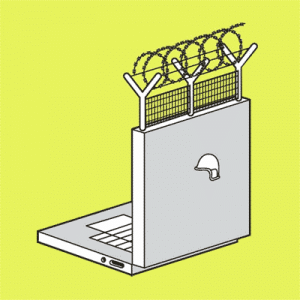

As new technologies and big data deliver previously unimagined connections and conveniences, the shadow side of cyber threats is also growing. Cybercriminals can scale to unprecedented levels using artificial intelligence (AI) and launch sophisticated attacks that weren’t possible previously. Businesses must overcome new and increasingly complex cybersecurity challenges to seize the opportunities ahead. Here are six current cybersecurity trends that reflect the complicated nature of application security.
Remote work has blurred the lines between personal and professional for many people. While this has disadvantages, it also offers increased flexibility that many workers crave. People are often more comfortable and productive using their own devices. Increasingly, these devices are mobile, as apps allow people to perform more core business operations on tablets and smartphones.
The proliferation of personal and mobile devices has expanded the attack surface and increased the risk of data breaches. Individual devices are rarely subject to the same scrutiny as organizational assets, so they’re vulnerable to malware, phishing attacks, and unauthorized access.
To mitigate these risks, companies must take a multi-layered approach to security, starting with employee education. Human error accounts for the majority of security breaches. Teaching employees to recognize phishing attempts, use secure connections, and regularly update software can help secure personal devices.
The Internet of Things (IoT) allows people to track their steps, check the contents of their fridge from the grocery store, and follow their package delivery in real-time. Billions of devices are used in manufacturing, healthcare, and almost every other industry. Each one delivers value through data and visibility into previously opaque processes. Each one is also an attractive potential entry point for hackers.
Many IoT devices, such as those used in inventory management, are designed for rapid and widespread deployment. Due to the sheer number of devices needed, they’re designed with minimal security features to avoid being cost-prohibitive. IoT ecosystems are also fragmented and complex, making implementing standard security measures difficult.
Attacks such as the Mirai botnet attack demonstrate the importance of securing IoT devices so they can’t be used to instigate distributed denial-of-service (DDoS) attacks or infiltrate corporate networks.
Although the notion of cybersecurity as an end-of-cycle, tacked-on afterthought has been outdated, the shift-left philosophy is at the opposite end of the spectrum. Shift left is a proactive approach addressing security issues as early in the software development lifecycle (SDLC). Finding and mitigating vulnerabilities and flaws early is easier and cheaper than remediating them after deployment.
The continuous integration and continuous deployment (CI/CD) pipeline is a feature of modern software development. Shift left incorporates security measures such as automated static application security testing (SAST) and vulnerability scanning into the entire development process. Shift Left also promotes DevSecOps adoption for a continuous security culture that complies with regulatory requirements and industry standards.
The idea of Zero Trust has been around for a while, but the pandemic-accelerated digital transformation made it a practical imperative rather than an obscure ideal. There’s no way to sugarcoat it: Zero Trust is complex and expensive.
Zero Trust is based on the principle that trust is a weakness. Its “never trust, always verify” approach grants resources based on strict verification protocols considering contextual factors. In contrast to the “keys to the kingdom” approach that gives extensive access at a single point of entry, Zero Trust grants the least privilege for the last time users need to perform their authorized tasks. Every access request is authenticated and authorized in real-time, so only legitimate users can access resources and only when and for how long they need them. Zero Trust reduces the number of open endpoints and minimizes the chances of a lateral attack from hackers gaining access to a connected but less secure system.
Given the current political unrest in much of the world, it’s unfortunate that cyberattacks aren’t solely conducted by lone criminals looking for a payday. There’s been a rise in state-sponsored hacking attempts motivated by espionage, political persuasion, and disruption of operations.
Hostile nations often conduct cyberattacks as advanced persistent threats (APT). Unlike ransomware attacks or quickly apparent hacks, APTs are stealthy, prolonged attacks that different countries use to gain and maintain unauthorized access to important systems.
Russia, China, Iran, and North Korea are currently the most prominent nation-state cyber actors.
The use of AI — particularly machine learning — in cybersecurity is a sword that cuts both ways. Advanced security tools, such as automated vulnerability scanning, use AI to quickly identify and respond to threats in real-time.
Machine learning algorithms can identify subtle patterns and deviations in large datasets and then use that information to flag potentially suspicious or fraudulent activities. Banking applications automatically block access if they detect anomalies that could compromise an account.
Another practical cybersecurity application of machine learning is predictive analytics. These models analyze historical data to predict future cyberattacks. This proactive approach includes threat hunting, continuous monitoring designed to scan for indicators of compromise, and advanced persistent threats continuously.
Although AI plays a significant role in preventing and blocking cybersecurity threats, it also plays a vital role in creating them. Hackers use AI to find vulnerabilities — including sophisticated and targeted phishing attacks — and automate the attack process.
Kiuwan’s end-to-end application security platform incorporates AI and machine learning to protect your codebase from established and emerging cyber threats. For organizations embracing a DevSecOps approach to cybersecurity, our automated scanning tools let your teams integrate security from the earliest phases through deployment and beyond. Reach out today to request a free trial.


